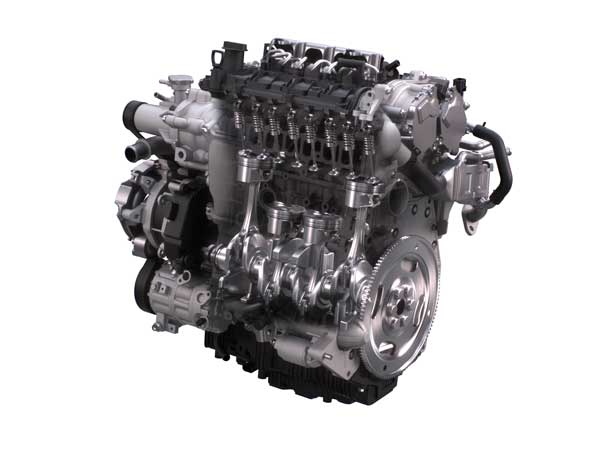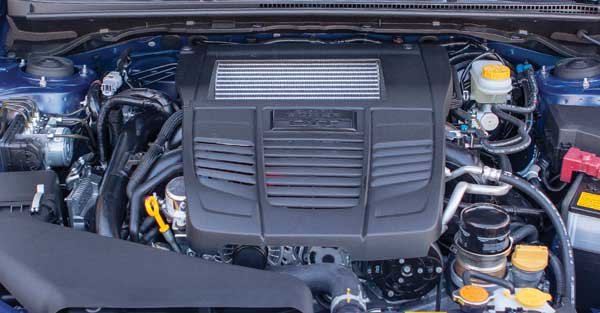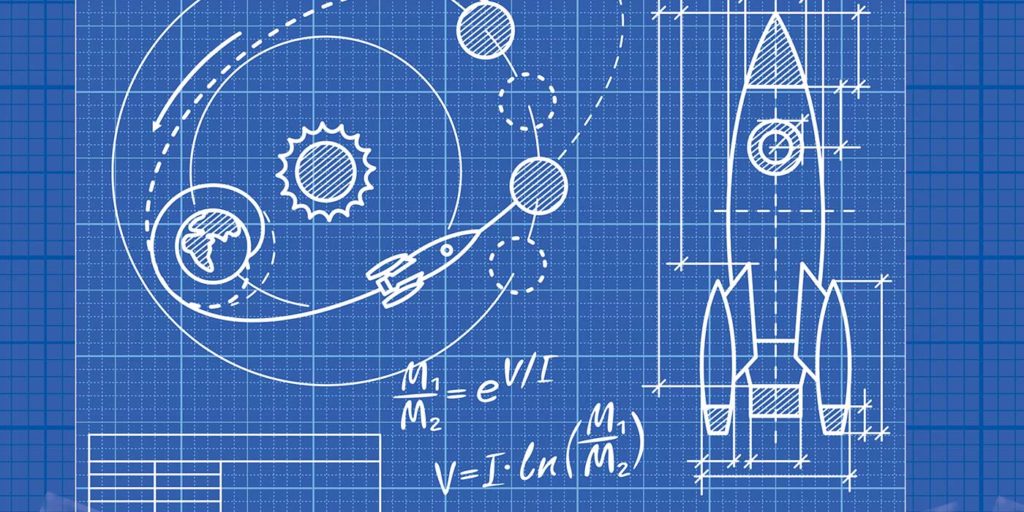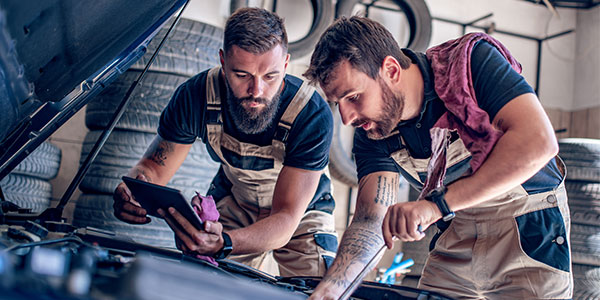Mazda’s Spark-Controlled Compression Ignition (SpCCI) and Homogenous Charge Compression Ignition (HCCI) engines use high compression ratios to ensure complete combustion of the air/fuel charge (see Photo 1).
ICE designs are trending toward smaller engines combined with higher turbocharger boosts to produce big-engine torque and horsepower ratings. Since torque output depends upon turning a given volume of gasoline into heat in a given amount of time, either ICE design requires their coolant and engine oils temperatures to be properly controlled.

TOO COLD
The products of perfect hydrocarbon combustion are carbon dioxide (CO2) and water (H2O). As residual water vapors condense inside the crankcase, they combine with engine oil and carbon soot to form a black, gooey substance known as crankcase sludge.
Unfortunately, black sludge clogs small lubrication orifices found in modern engines using variable valve timing (VVT) solenoids and camshaft timing phasers. As the VVT system becomes less responsive to engine control module (ECM) commands, the ECM begins to set intermittent valve timing trouble codes. To remedy these VVT codes, the engine must either be disassembled for cleaning or be completely replaced to restore correct lubrication and valve timing system operation.
On the plus side, a typical 194º F cooling system thermostat prevents the formation of sludge by raising oil temperatures close to the boiling point of water. As the engine warms up, accumulated water evaporates from the engine oil and is vented through a positive crankcase ventilation (PCV) system into the intake manifold and out the exhaust, which pretty much eliminates sludge build-up.
TOO HOT
Modern pressurized cooling systems operating at 18 psi at sea level with a 50/50 mixture of ethylene glycol and water can operate at approximately 240º F without boiling the coolant. But, as we shall see, there’s more to cooling system operation than just preventing radiator boil-overs.
As a rule of thumb, engine oil temperatures run about 50º F higher than coolant temperatures because engine oil cools the rapidly spinning crankshaft, the undersides of hot pistons and a fairly hot cylinder head. Turbochargers contribute to rising oil temperatures since the oil itself cools a turbocharger spinning at 100,000+ plus rpm in roughly a 1,000º F exhaust stream. Many turbocharged engines now tap an oil jet into the main oil gallery that’s aimed at the undersides of the piston domes and cools them with a small stream of engine oil.
But keep in mind that an engine with no auxiliary oil cooling operating at 240º F. coolant temperature at wide-open throttle can push oil temperatures in excess of 300+º F, a point at which the engine oil begins to chemically break down. At 400º F, the engine oil temperature is approaching the flash point of the oil itself, which means that the engine is failing to correctly lubricate.
JUST RIGHT
Since gasoline vaporizes better at higher temperatures, most thermostats are designed to open in the 180º F -194° F range. While higher operating temperatures increase fuel economy and lower exhaust emissions, these numbers aren’t chiseled into stone for the following reasons.
Most original equipment thermostats open at 194° F and others at 180° F. In reality, the engine control module controls maximum coolant temperature at low speeds by activating the cooling fans at about 230° F. All other issues being equal, a modern engine needs higher operating temperatures at lower engine loads to properly vaporize gasoline and evaporate residual internal moisture. But, once warmed up, an engine needs lower operating temperatures at higher engine loads to increase volumetric efficiency by cooling intake air and to prevent pre-ignition and detonation by cooling the cylinder heads.
CYLINDER HEAD TEMPERATURES
To be precise, pre-ignition is usually caused by loose spark plugs or spark plugs that are of a heat range too hot for the application.
In any case, a hot spot in the combustion chamber can ignite an air/fuel charge before the timed spark event. Whatever the cause, pre-ignition increases the duration in crankshaft degrees that the piston dome is exposed to high combustion heat. Pre-ignition is most recognizable by a hole melted through the center of the piston.
In contrast, detonation is caused by an extremely fast rise in cylinder pressure, which detonates the air/fuel mixture located around the periphery of the piston. Detonation is usually caused by gasoline octane ratings that are too low for use in a high compression engine. Detonation is most recognizable by mechanical breakage around the piston ring and ring land areas.
With Mazda’s spark-controlled compression ignition (SpCCI) engine, the spark event increases cylinder pressure which detonates a stratified peripheral air/fuel charge. With Mazda’s HCCI engines, compression ignition alone detonates a homogenous air/fuel charge. In either application, detonation is controlled by using very lean air/fuel ratios that eliminate the destructive effects of detonation. That said, let’s take a look at how modern engines are controlling combustion chamber temperatures.
ALUMINUM CYLINDER HEADS
Aluminum heads tolerate higher compression ratios because aluminum cools much faster than cast iron. For this reason, our new-age engines make extensive use of aluminum for engine and cooling system construction.
INTERCOOLERS
Intake air helps cool the spark plugs, combustion chambers and pistons. Cool intake air also increases horsepower and torque by increasing the density of the intake charge. Since turbocharging compresses intake air, the incoming air is heated in direct proportion turbocharging pressure or boost. Intercoolers are designed to transfer this excessive heat from the intake air to the atmosphere (see Photo 2).

TURBOCHARGER COOLING
The exhaust-driven turbocharger is perhaps the hottest lubricated part of the engine. In older designs, a hot turbo could actually turn the oil retained in the turbo bearing into hard carbon after a hot engine shutdown. For this reason, most turbo applications now specify synthetic motor oils with higher flash points. Many modern engines are also using engine coolant to reduce turbocharger bearing temperatures, which prevents hard carbon from forming in turbocharger bearings.
ELECTRIC WATER PUMPS
Once restricted to high-end imports like Mercedes, we’re likely to see more electric water pumps on lower-end import applications because the ECM can directly control water pump speed through electronic pulse modulation. When the thermostat is closed on a cold engine, an electric water pump can slowly circulate the coolant inside the engine assembly to evenly warm the engine assembly. Once at operating temperature, the ECM can potentially increase water pump speed to match engine load.
HEATED THERMOSTATS
Electrically heated thermostats can modulate coolant temperature to match engine operating conditions. Here again, we might want 200+° F for part-throttle fuel economy and 160° F for wide-open throttle operation. We can reduce thermostat opening temperature by electrically heating the thermostatic pellet. In any case, it’s important to know that thermostat opening temperatures for a high-compression or turbo-charged engines might differ from their conventional counterparts.
AUXILIARY OIL COOLING
Since five quarts of oil won’t adequately cool the pistons and crankshaft assembly on high-performance or heavy-duty engines, many manufacturers add larger oil capacities and auxiliary oil coolers to extend engine life. Many original equipment oil cooler applications use the engine coolant itself to help warm the oil during cold starts and reduce oil temperatures under full-load conditions. Most aftermarket auxiliary engine oil coolers are air-cooled but are designed to contain much higher oil pressures than similar automatic transmission oil coolers. In any case, the goal of any oil cooling system is to extend crankshaft bearing life by keeping the engine oil cool.
It’s More Than Just Checking
the Radiator
For optimum engine life, fuel economy and power, all of the engine’s cooling system parts must be operating at specified parameters. Your most powerful tool for analyzing cooling system performance is your enhanced scan tool. Let’s begin by looking at some operating parameters.
SENSOR RATIONALIZATION: After an overnight cold soak, the indicated coolant temperature should closely match the automatic transmission fluid and ambient air temperatures.
AMBIENT AIR TEMPERATURES: Due to quicker warming, ambient air temperature will be slightly higher than engine coolant and automatic transmission fluid temperatures.
MANUAL VERIFICATION: At operating temperature, the indicated engine coolant temperature should closely match the coolant outlet temperature at the cylinder head as measured with an infrared pyrometer or “heat gun.”
BI-DIRECTIONAL DIAGNOSTICS: Go to the engine “functional test” mode in your scan tool to manually activate both low and high-speed electric fan functions. Fans should immediately activate and run smoothly.
BATTERY VOLTAGE: The battery should be at a full 12.6 volts to ensure an accurate fan activation test.
COOLANT COLOR: The coolant should have a clear, bright color and be free of rust or oil.
COOLANT CONTAMINATION: Oil in the radiator indicates a transmission or an engine oil cooler leak.
NEW HOSES: In any case, the coolant hoses should be replaced due to oil contamination.
HIGH MILEAGE: Although modern coolant hoses contain EPDM rubber, I’d recommend replacing, rather than reinstalling them on high-mileage vehicles.
WEAR GAUGES: Always use wear gauges to measure rib wear depth on serpentine belts.
WEAR INDICATORS: The wear indicator on the belt tensioner can also be used to evaluate belt wear.
LEAKING TURBOS: A leaking turbocharger oil seal can contaminate and perhaps ruin the turbo intercooler. Cleaning or replacement might be required.














